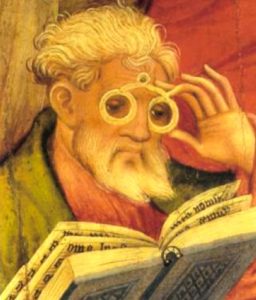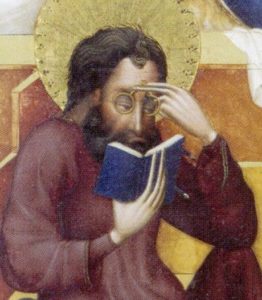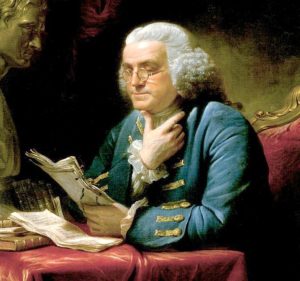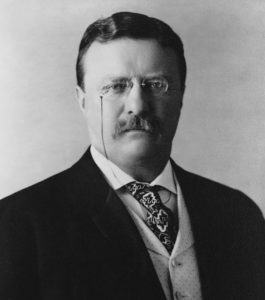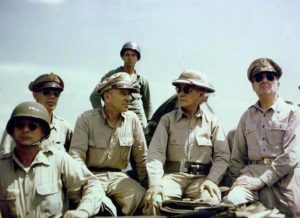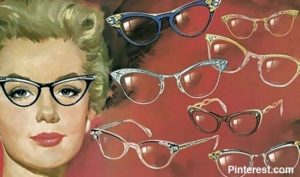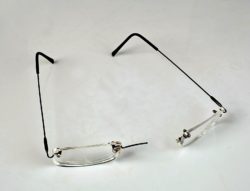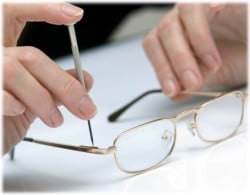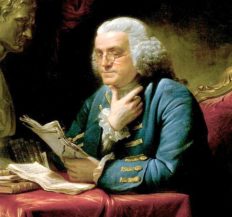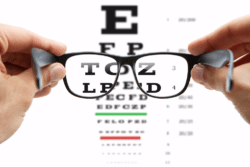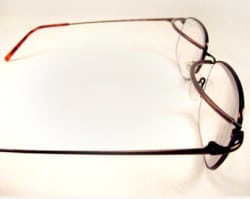Throughout the centuries, scientists, inventors and designers have looked for ways to help improve vision through the use of corrective eyewear. Studying the history of eyewear gives evidence of the use of convex lenses dating all the way from 1021 AD. However, the invention of eyewear close to how we know it today didn’t appear until the late 1200’s.
While we know that the first eyeglasses were made in Italy around 1286, it is still not known who the first inventor was. Here’s a look at the history of one of the world’s most important inventions:
The History of Glasses over Time
1286: Eyeglasses First Made Available
History shows that it was Friar Alessandro della Spina of Pisa, Italy who was the first to make and share corrective eyeglasses. The Ancient Chronicle of the Dominican Monastery of St. Catherine in Pisa records: “Eyeglasses, having first been made by someone else, who was unwilling to share them, he (Spina) made them and shared them with everyone with a cheerful and willing heart.” By 1301, there were guild regulations in Venice governing the sale of eyeglasses.
1352: Eyeglasses in Art
The earliest pictorial evidence for the use of eyeglasses is Tommaso da Modena‘s 1352 portrait of the cardinal Hugh de Provence reading in a scriptorium.
1400: Rivet Spectacles
Early eyeglass frames consisted of two magnifying glasses riveted together by the handles so that they could grip the nose. These are referred to as ‘rivet spectacles.’ The earliest surviving examples were found under the floorboards of the nun’s choir-stalls during a 1953 renovation to the Wienhausen Abbey in northern Germany.
1400-1600: Hand Held Spectacles
From the beginning of designed eyewear, spectacles failed to remain in position and stay on. During the 15th and 16th centuries, eyeglasses were normally hand-held. Eventually they evolved into more comfortable arched bridge known as ‘bow specs.’
1600-1800: Nuremberg Style
One-piece wire (usually copper) frames with round lenses, better known as Nuremberg style nose spectacles came into fashion, being mass-produced throughout the 17th century and until the early 19th century.
1677-1727: Temple Spectacles
The critical problem of stability, went unsolved for about 440 years, until London optician Edward Scarlett perfected the ‘temple spectacles.’ Below they are seen in a portrait by El Greco.
1752: Double-hinged Temple Spectacles
Another London instrument-maker and optician, James Ayscough, gets the credit for inventing this first double-hinged temple in 1752. He described these sides as “so contrived as to press neither upon the nose nor upon the temples.”
1760: Bifocals
Split lenses, later known as bifocals, were invented, most likely by Benjamin Franklin (who suffered from both myopia and presbyopia). Franklin wrote to London philanthropist George Whatley in may 1785, “As I wear my own glasses constantly, I have only to move my eyes up or down, as I want to see distinctly far or near, the proper glasses being always ready.”
1799: First Eyewear Shop
As spectacles became more common in the United States, John McAllister, Sr. arrived in America from Glasgow. Just before the Revolutionary War, he began selling walking sticks and riding whips. Then in 1799, he decided that spectacles might be a good addition and established the first optical shop in America in Philadelphia.
As the 20th century opened, eyeglasses came to be considered a fashion accessory. Because of this, various styles have come in and out of popularity.
1900-1920: Pince-nez
As the 19th Century came to a close, more and more people wore their eyeglasses everyday. A popular style of the day (and inexpensive) was the pince-nez (French for ‘pinch nose;). Pince-nez have no temples, but are fit snugly on the bridge of the nose.
1913-1945: Modern-Day Sunglasses
In 1913, Sir William Crookes of England created a lens capable of absorbing both ultraviolet and infrared light. Further advances in sunglass eyewear were created in order to meet the need of military personnel during World War ll. As a result, manufacturers began to market sunglasses to consumers that were both practical and fashionable.
1940-1950: Advancement in Fashion Frames
Advances in the manufacture of plastics made a large variety of spectacles available in almost every color. Women wore frames characterized by an upsweep on the top rim (known as ‘cat-eyes’), a style that remained popular until the end of the 1960’s. Men of that era, tended to sport gold wire frames.
1950 to Present
Eyeglasses went from being ‘spectacles’ to ‘eyewear’ and now are an important component to everyone’s wardrobe. As with clothes, eyewear changes with the trends of the season and need to be continually updated or you run the risk of being ‘out of style.’
At fixmyglasses.com we strive to entertain and educate on eyewear old and new!


